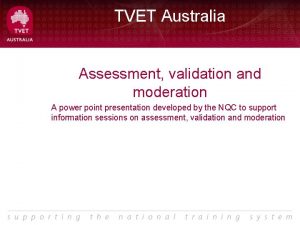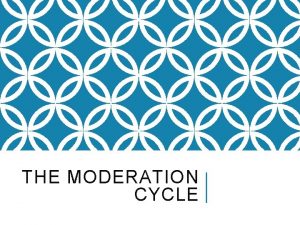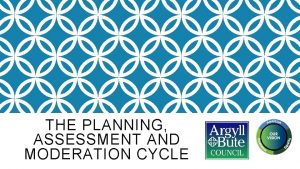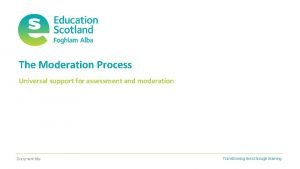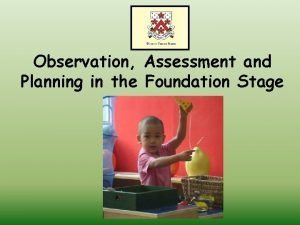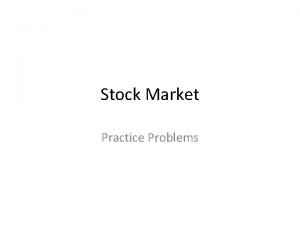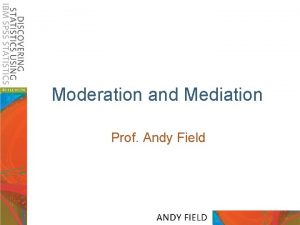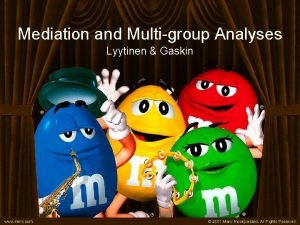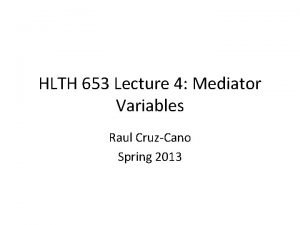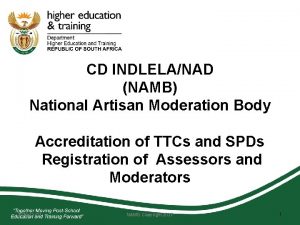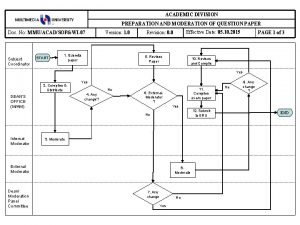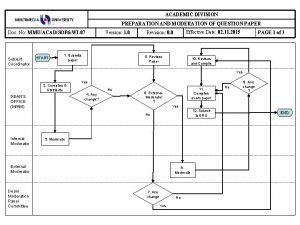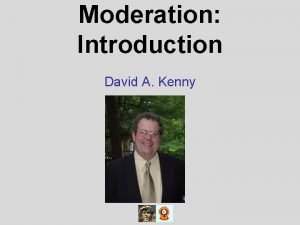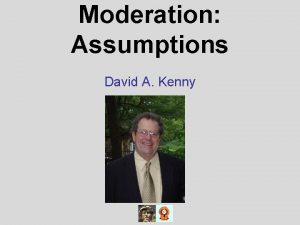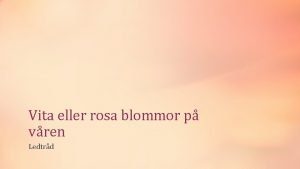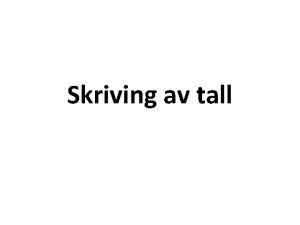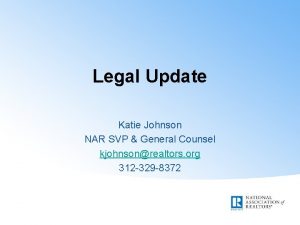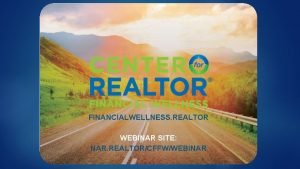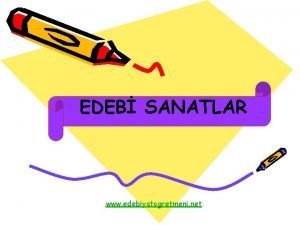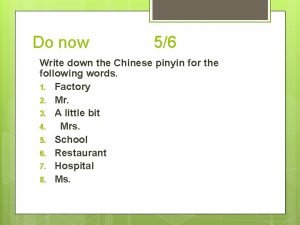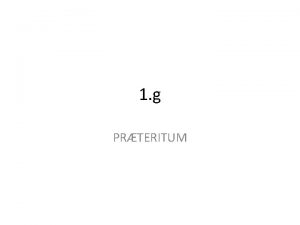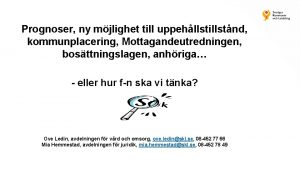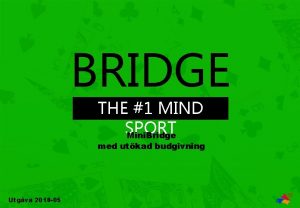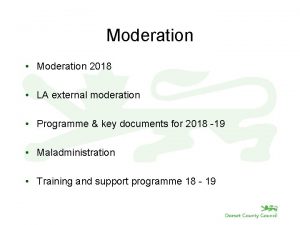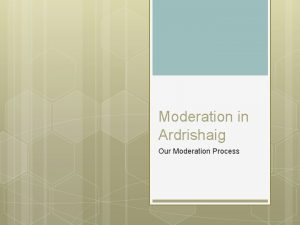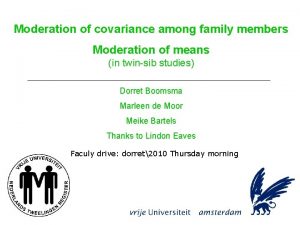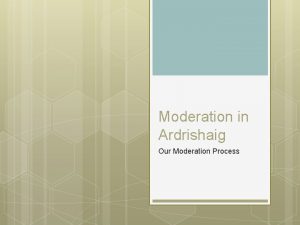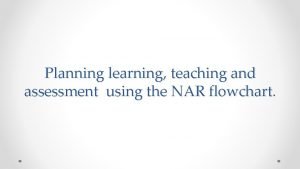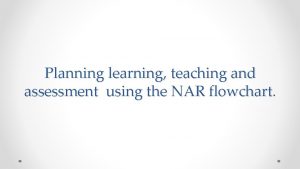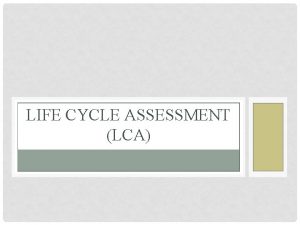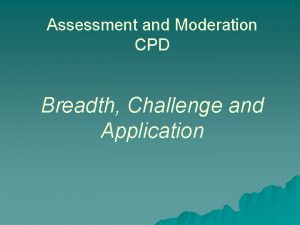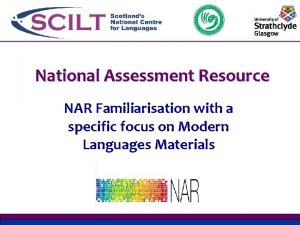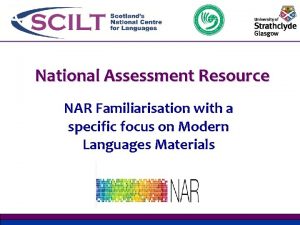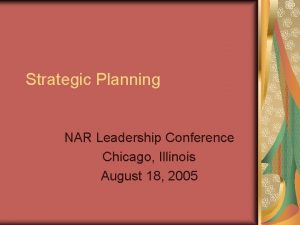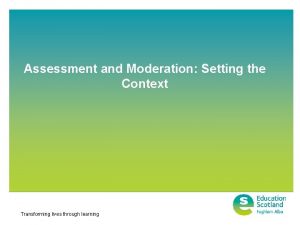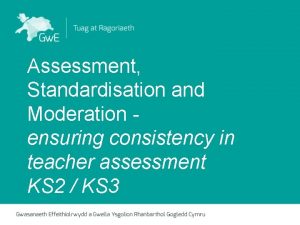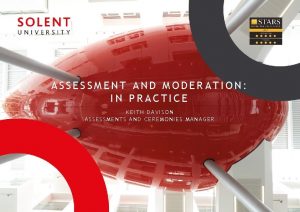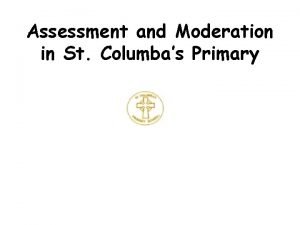THE PLANNING ASSESSMENT AND MODERATION CYCLE THE NAR






























- Slides: 30

THE PLANNING, ASSESSMENT AND MODERATION CYCLE

THE NAR FLOWCHART Where we began…

The Moderation Flowchart carried out within and across school and local authorities The Learner Planning together for learning, teaching and assessment. Planning considers how best the needs of individual and groups of children and young people will be met. Experiences and Outcomes Plan Es and Os, grouping as appropriate to the needs of learners. The Ed Scot Updated version… Success Criteria Learning Intentions Clear, relevant and measurable definitions of success. Learners involved in co-creating them. Reflect the expected standards within the Es and Os Learning Experiences Assessment Approaches The range of planned learning experiences provides opportunities for breadth, challenge and application at the appropriate level. There is a balance between on-going and periodic holistic assessment. The learner has opportunities to demonstrate breadth, challenge and application of their learning. Evidence A range of appropriate evidence is gathered which demonstrates breadth, challenge and application of learning. Evaluate Learning Teachers and practitioners use standards within the Es and Os and benchmarks to evaluate learners’ progress. Feedback and Next Steps Feedback is linked to the success criteria and the learner can talk about their next steps. Reporting on Progress The reporting process highlights progress and next steps in learning

The Argyll and Bute Version… All ha the s ve ame key mess ages !

PLANNING THE LEARNING Step 1: Consider your learners – where are they on their learning journey? What do they need in order to progress? Where do their interests lie? Step 2: Bundle Es and Os as appropriate to learners and learning. v Planning should be a collaborative process – the learner should be involved and where possible, other members of staff and partners. v Identify the Es and Os that will be the focus of the learning? Within your theme, bundle Es and Os as appropriate to the needs of your learners. v Planned learning may touch on several curriculum areas but focus the selection of Es and Os on the learning you plan to assess.

PLANNING THE LEARNING CONTD Step 3: From your selected Es and Os, identify Learning Intentions. v Look at the selected Es and Os and consider the learning opportunities in each. Encourage practitioners to become skilled in breaking down Es and Os into planned learning. v Determine the Learning Intentions, keeping in mind the assessment evidence you plan to gather. Step 4: Work with learners to devise appropriate Success Criteria. v Ensure there is progression across your L. Is – it may be useful to consider a rubric within your class/across your department/school. v Be skilled in your questioning when devising Success Criteria with your learners.

WHAT IS A LEARNING INTENTION? § What learners should know, understand or be able to do by the end of a learning experience. § The focus should be on what is to be learned What makes a good Learning Intention? § set the learning intention in context § keep it focused § use language the pupils will understand § use words associated with learning

WHY ARE LEARNING INTENTIONS IMPORTANT? §Learners will be more focused and actively engaged in their own learning. §Sharing the learning intention makes it easier to give quality feedback specifically on what has been learned.

THE FIRST ‘ACTIVE’ ELEMENT OF FORMATIVE ASSESSMENT IN THE CLASSROOM IS THE SHARING OF LEARNING INTENTIONS WITH CHILDREN…WITHOUT THE LEARNING INTENTION, CHILDREN ARE MERELY VICTIMS OF THE TEACHER’S WHIM. UNLOCKING FORMATIVE ASSESSMENT SHIRLEY CLARKE, 2001

WHAT ARE SUCCESS CRITERIA? Success criteria are suggested ways to achieve the learning intention. As you plan and consider your success criteria you should ensure that they are directly linked to your learning intentions and the evidence of learning which you will be aiming to collect. Children should be co-constructing success criteria from early level onwards.

GUIDING QUESTIONS TO HELP… What can you do to show me that you have learnt this? What could we make? What can you do to show me that you played a role? How will we know if our _____ has been a success? What roles are required for a successful ______? What skills would a person require to fill each of these roles? How will you know that you have been successful as an individual and as part of a group? How will we measure our success? What evidence might you gather to show me that you were successful? How will you record your evidence? How will you tell your parents about our project and show them that you were successful in your role?


Simple task Progression of Success Criteria – Early toward third level Complex task LIT 0 -26 a, 1 -26 a, 2 -26 a We are learning to…. share information in a way that communicates my message. select information to create a report that communicates my message. Success Criteria I can… * present information * with support I can that is true. write about what I’ve found out in my own words. * use my listening skills to find out information. * select information about the topic from what I see and hear. *create a report that is neat, tidy and correct. * write a neat report with pictures and a title. * use new vocabulary related to my topic * I can select topic when I am talking. words from a word bank to use in my writing. select information and organise it to create a report to communicate my message. select relevant information to and organise it to create a report which is useful to others. select relevant information from a given sources to range of given create a report for sources to create a a specific coherent report for a audience. specific audience. select relevant information taken from independently chosen sources to create a coherent, nonfiction, report containing subject specific vocabulary. * write about what * with guidance I * use the books or * choose sources * use a range of independently I’ve found out in my can use the books websites given to from a given selected sources (internet, own words. and websites given find information selection that are books, people) to gather to find information for a research suitable for my information on each of my for each question. needs. subheadings. * select information * choose * record specific * gather relevant and concise about the topic information about information and demonstrate from what read. my subject which put it in my own an understanding by answers a question. answers the words. discussing it in my own words. questions I have * organise my information into * write a neat * I can use a written. a coherent non-fiction report with writing frame to * I can organise * use the features including (a suitable pictures, a title and structure my report my writing under of a report introduction explaining what subheadings. that includes subheadings and including a clear will be in the report, a headings and consider my introduction and conclusion to sum up, pictures. layout so it makes rounding off nicely. chronological organization sense. where possible, links) * I can select topic * I can use topic words from a range language to give * I can use topic * write clear of resources to use information to language which is sentences using * include subject specific in my writing. others. suitable for my some technical vocabulary and define this in audience. language. my glossary. * Include my sources at the end – listing what websites or primary sources I used.

PLANNING THE LEARNING EXPERIENCES Step 5: Plan a range of learning experiences and assessment approaches that allow all learners to demonstrate breadth, challenge and application of their learning. v Plan learning experiences which match the learning intentions. v Consider the different needs in the classroom and the best tasks / activities to motivate and engage learners. v Will the learning experiences give learners the opportunity to develop and demonstrate their knowledge, understanding, skills, attributes and capabilities? v Reflect the 7 design principles. v Ensure you have planned for a range of assessment approaches that allow you to measure progress against agreed success criteria.

THE PRINCIPLES OF DESIGN v. Challenge and enjoyment v. Breadth v. Depth v. Progression v. Personalisation and choice v. Relevance v. Coherence


HOLISTIC ASSESSMENT TASKS v. Demonstrate breadth of learning v. Require the learner to draw on a range of learning from a number of Es and Os across different organisers v. Demonstrate challenge v. Promote higher order thinking skills-analyse, evaluate & create v. Demonstrate application of learning in new and unfamiliar situations v. Come from one of the four contexts of learning v. Tackling bureaucracy – reducing the time for assessment as focusing on bundles of Es and Os

PLANNING ASSESSMENT EVIDENCE Step 6: Plan to gather a range of evidence. v Consider the evidence you want to gather to best exemplify the learning that has taken place in relation to the agreed success criteria. v A range of evidence allows for a more holistic judgement to be made.

SOURCES OF EVIDENCE v. Observations of learners carrying out tasks and activities, including practical investigations, performances, oral presentations and discussions v. Records (oral, written, audio-visual) created by children and young people which may include self assessment and/or peer assessment or may be assessed by the teacher v. Information obtained through questioning in high quality interactions and dialogue v. Written responses v. A product, for example, a piece of artwork, a report or a project v. Accounts provided by others



EVALUATE THE LEARNING Step 7: Evaluate learning against standards within Es and Os and benchmarks v Did the learning and assessment approaches give learners the opportunity to develop and demonstrate their knowledge, understanding, skills, capabilities and attributes? v What does the assessment evidence tell you about each learner – evaluate learners’ progress within a level by referring the benchmarks. v This information should form part of tracking and monitoring. v Ensure children are given the opportunity to evaluate their own learning.

EVALUATION OF LEARNING v. Valid/reliable judgements are made when staff have been collaboratively planning at all of the steps in the process. v. When learners reflect on their own learning, they come to understand what they have achieved, what they can do to improve and how to go about it. v. Learners will need help and careful monitoring in the initial stages of introducing self assessment as it can prove difficult for some young people. They need to be trained, supported and encouraged to develop these skills.

FEEDBACK AND NEXT STEPS Step 8: Provide effective feedback and appropriate next steps v Consider each learner’s progress and share feedback linking learning back to agreed learning intentions and success criteria v What are the next steps? Have these been recorded in language appropriate to the stage of development of the learner? v Has the learning experience been shared and understood by learners, parents and others? Step 9: Report on Progress v What is the best approach to reporting in your context for your learners, parents and others? Have you referred to the recent guidance?

REPORTING ON PROGRESS v. Must be regular! v. Child’s voice/teacher’s voice and opportunity for the parent voice v. Reflect on learning that has taken place – successes/setbacks v. Plan next steps together v. KU, skills, attributes and capabilities – 4 contexts v. Learning Logs v. Learning overviews v. End of year reports v. Profiles

REFLECT ON THE WHOLE PROCESS… v Reflect on the whole process against your understanding of Bt. C 5 and the PAM cycle. This a cyclical process – there is no ‘end point’. Return again to step 1 considering where you are now as a team/where your learners are on their journey. v Identify strengths and areas for development before beginning the cycle again.

NAR PLANNING DISPLAY



 Validation and moderation service
Validation and moderation service Moderation cycle
Moderation cycle Moderation cycle
Moderation cycle The moderation cycle
The moderation cycle Observation assessment and planning cycle
Observation assessment and planning cycle City and guilds technicals
City and guilds technicals Definition of vocabulary
Definition of vocabulary Andy field moderation
Andy field moderation Moderating vs mediating variable
Moderating vs mediating variable Mediation vs moderation
Mediation vs moderation Moderating vs mediating variable
Moderating vs mediating variable Namb certification
Namb certification Question paper moderation tool
Question paper moderation tool Moderation of question papers
Moderation of question papers Moderation assumptions
Moderation assumptions Moderation assumptions
Moderation assumptions Guidelines for healthful eating
Guidelines for healthful eating Rosa träd kungsträdgården
Rosa träd kungsträdgården Tevriye nedir
Tevriye nedir Skrive tall
Skrive tall O store gud tekst
O store gud tekst Katy johnson non attorney spokesperson
Katy johnson non attorney spokesperson Gustav vasas kröning
Gustav vasas kröning Nar.realtor/cffw
Nar.realtor/cffw Edebiyatogretmeni.net
Edebiyatogretmeni.net Zai nar meaning
Zai nar meaning Uregelmæssige verber
Uregelmæssige verber När får man csn
När får man csn Uttøyningsøvelser
Uttøyningsøvelser Jesus sista vecka
Jesus sista vecka När träkarlen lägger korten på bordet
När träkarlen lägger korten på bordet
